This medical examiner sounded an early warning about the opioid crisis. Now in a new role, hes doing something about it

FOR TWO DECADES, I WORKED AS what I call an accountant of America’s opioid crisis. From 1997 to 2017, I was the chief medical examiner for the state of New Hampshire. I oversaw autopsies. My department’s job was to determine and officially certify the cause of death.
New Hampshire is a small state. In 1997, the population was almost 1.2 million. (It’s a little more than 1.3 million now.) When I started as chief medical examiner, the department saw roughly 30 to 40 drug-related deaths per year. Then, suddenly, in the early 2000s, after pharmaceutical companies began heavily marketing opioid pain medicines, the number of drug deaths shot up to 200 per year. They kept climbing. By 2015, they were at 439 per year. Last year, 487 people in New Hampshire died from drug-related causes. That’s more than one drug-related death per day. A one thousand percent increase in two decades. One thousand percent!
I learned to recognize the telltale signs of opioid abuse. Needle marks. Bruising in areas associated with injection. Inflamed or damaged sinuses from snorting drugs. Signs of respiratory failure—most overdose victims die from lack of oxygen to the brain.
I did my job with professionalism and medical objectivity. But the work took its toll. I’m a Christian, strongly influenced by my upbringing and youth spent as a Boy Scout. I believe in serving others. Examining the bodies of overdose victims, I often felt helpless. I could determine how people died. I couldn’t stop the deaths from happening.
I told myself when I took over my department that I would stay in the job no more than 20 years. In my view, public servants shouldn’t consider their jobs lifetime appointments. Organizations need new leadership to change and grow. I knew I would retire in 2017.
Diese Geschichte stammt aus der October 2018-Ausgabe von Guideposts.
Starten Sie Ihre 7-tägige kostenlose Testversion von Magzter GOLD, um auf Tausende kuratierte Premium-Storys sowie über 8.000 Zeitschriften und Zeitungen zuzugreifen.
Bereits Abonnent ? Anmelden
Diese Geschichte stammt aus der October 2018-Ausgabe von Guideposts.
Starten Sie Ihre 7-tägige kostenlose Testversion von Magzter GOLD, um auf Tausende kuratierte Premium-Storys sowie über 8.000 Zeitschriften und Zeitungen zuzugreifen.
Bereits Abonnent? Anmelden

What prayer can do
POWER IN OUR DAY-TO-DAY LIVES
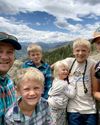
Rejoice in All Things
My husband and I had an annual tradition of celebrating the high points of the year. This time, he wanted to try something different

Special Delivery
A month after my wife died and my life felt so empty, the only thing I had to look forward to was Amazon

A Prayer for Cullen
Even in a family crisis, I had trouble quieting my mind enough to listen for God

Blackie & Rosebud
What would happen to my friend's cats now that she was gone?
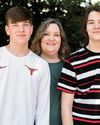
The Kids Are Alright
My twin boys and I had always been close. I thought they needed me. Now I wasn't so sure

Kindred Spirits
I thought the nose ring gave it away—she was just another teenager. I couldn't imagine how she could help me
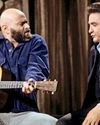
A Boy Named Sue
In 1969, Johnny Cash and his wife, June, threw a party at their house in Hendersonville, Tennessee, a “guitar pull,” where guests passed around a guitar and tried out new songs.
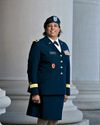
Active Duty
I'd tried everything for my knee - physical therapy, gel injections, a cumbersome brace. Everything except prayer
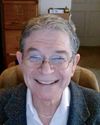
Living an Abundant Life
A conversation with spirituality and health researcher Harold G. Koenig, M.D., on what makes people truly happy